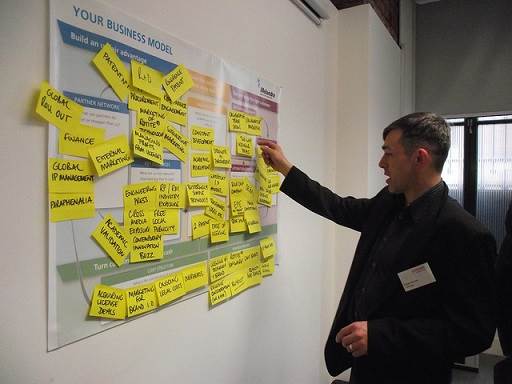Anyone who has faced the enormous obstacles of starting their own business while sipping on a cup of Starbucks coffee or reading an email or two from an Apple computer should know that the struggle to make it in the competitive business world is not impossible – take Starbucks and Apple, for example.
Many years ago, a group of men invested nearly everything they had in a garage-based computer production venture. One of those men was Steve Jobs. After selling anything from their cars to calculators, they scraped up enough capital to start working with about 50 orders. Skip ahead a few decades. Apple has become the fastest growing company in history. With an annual revenue of billions of dollars and lucrative business in dozens of countries around the world, Apple is a poster child for a small business that can make it.
Somewhere else many years ago, a small band of modest school teachers spent all they had (and some loans to boot) to invest in a small, quaint little coffee shop – Starbucks Coffee, Tea, and Spice. Currently, Starbucks Coffee is in nearly every city across the globe, and makes billions of dollars a year through sales, sponsorship, and marketing.
But how did this happen? What was so special about these investors that skyrocketed their businesses into infamy across the world, that created a company so vast and so enormous that there’s still no end in sight for either of these powerhouse? How much effort did they spend making business models and company plans, investing, marketing, and saving? The answer is, to put it simply, a lot.

Any company who genuinely wants to become a type of business like these companies needs to know that the amount of time, energy, and innovation needed to succeed is almost infinite. Every available amount of knowledge and energy must be used to fuel market research, fund entrepreneur relations, and most importantly, create customers. None of this comes easy, but entrepreneurs such as Pepe Fanjul have and will continue to use this type of model to succeed.
The business models of companies like Apple and Starbucks are as precise as they are thorough. If a company can’t understand and utilize the business within their zip code, how are they going to tackle the differentiating cultures, companies, and customers of the city, the state, the nations? Those considering starting a business, even one out of the garage, can succeed if they pay careful attention to the specific tools and resources available to them.
The major startup capital for most of these companies came from outside investors, and continued by sustaining relationships with those above the company until they reached the top. If you want to be great, follow those who already are. If you want a big, global company, use the tools and resources big global companies did. You just might make it into the big 500.